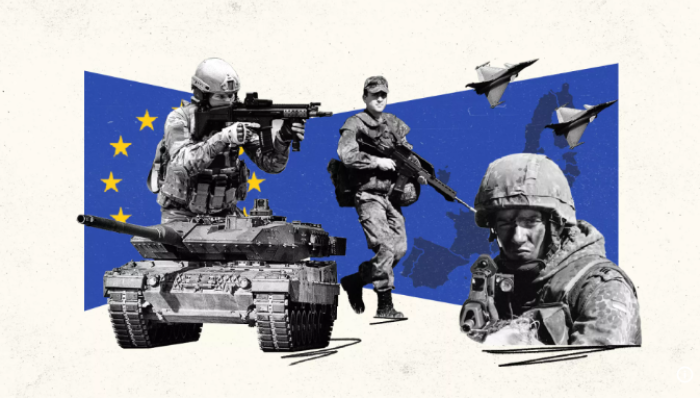
The concept of a unified European army has resurfaced amid rising geopolitical tensions and increasing pressure on NATO allies to enhance military capabilities. While some leaders advocate for a continental force to ensure long-term peace and security, EU officials remain cautious, casting doubts on the feasibility of such a project.
Renewed Calls Amid Conflict Spanish Prime Minister Pedro Sánchez and Ukrainian President Volodymyr Zelenskyy are among the most recent proponents of a European military force. Sánchez emphasized the importance of EU troops operating under a shared flag, arguing this unity is key to forming a “true union.”
In theory, a unified army would streamline interoperability across weapon systems, improve coordination through centralized command structures, and elevate the EU’s strategic autonomy.
Current Military Landscape in Europe According to the IISS Military Balance 2025 report, Europe currently fields 1.47 million active-duty personnel. France, Germany, Poland, and Italy lead in troop numbers, with France alone contributing over 200,000 personnel. However, these forces remain fragmented, operating under national commands and strategic doctrines.
EU Reluctance and NATO Dependence Despite support from some national leaders, the European Commission remains firm in treating defense as a national prerogative. Officials argue the goal should be achieving interoperability among 27 capable national armies rather than forming a singular EU force.
Kaja Kallas, the EU’s chief diplomat, highlighted the inefficiencies of Europe’s fragmented defense systems, noting that the continent operates 172 types of major military platforms compared to just 32 in the U.S. Integration, not consolidation, remains the EU’s preferred path.
Strategic Shifts and NATO’s Demands As the U.S. pivots toward the Indo-Pacific, NATO is urging its 32 members to increase military readiness. At the upcoming summit in The Hague, allies are expected to face calls to raise military capability targets by 30% and boost defense spending to 3% of GDP.
Some EU countries, including Belgium, Italy, and Spain, still struggle to meet the current 2% threshold.
The Cost of Independence Analysts from the Bruegel economic think tank estimate that for Europe to act independently of U.S. support, a European army would require:
- 1,400 tanks
- 2,000 infantry fighting vehicles
- 700 artillery units
- 1 million 155mm shells
- 300,000 additional troops
- 2,000 loitering munitions per year
- €250 billion in annual defense spending (approx. 3.5% of GDP)
These figures underscore the immense financial and logistical burden such an initiative would entail.
While the idea of a unified European army is gaining political traction in some quarters, logistical, financial, and political realities make it a distant goal. The EU continues to prioritize interoperability, shared procurement, and stronger collaboration with NATO over the formation of a standalone force.
